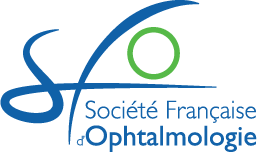The management of isolated vitreoretinal lymphoma (VRL) remains controversial due to his rarity. VRL prognosis remains severe, mainly because of the risk of central nervous system lymphoma development. The aim of this study was to evaluate the efficiency and safety of high-dose chemotherapy with autologous hematopoietic stem cell transplantation (HCT-ASCT) as a treatment of recurrent relapsing VRL.
Name
Chimiothérapie haute dose et autogreffe de moelle dans le traitement du lymphome vitréorétinien récidivant. Une étude du réseau LOC
Introduction
Patients et Methodes
We retrospectively studied medical records of patients included in the French LOC network database between 2011 and 2017 with isolated vitreoretinal relapse of either primary vitreoretinal lymphoma or oculocerebral lymphoma treated with HCT-ASCT. Hematologic, neurologic and ophtalmologic datas were screened.
Résultats
32 patients (16 F/16 M), all immunocompetent, were included in the study. Median age at HCT-ASCT was 62 (range 44 years-73 years). Median Karnofsky Performance status before HCT-ASCT was 90. At diagnosis, 17/32 had primary vitreoretinous lymphoma (PVRL), 7/32 Primary Central Nervous Cells Lymphoma (PCNCL), 8/32 PVRL and PCNL. Patients had previously received a median number of 1 line of treatment including high-dose methotrexate before HCT-ASCT. All patients received a thiotepa-based HCT. 81% of the patients experienced a complete response. 2 « toxic deaths » occurred. Mean follow-up was 41,6 months (range: 5-96). 9/32 patients had recurrences (5 VRL relapses, 1 cerebral relapse, 3 ocular and cerebral relapses). The 5-years OS was 81%. The 5-years OS was respectively 91% in the PRVRL groups, 85% in ocular and cerebral group and 64% in PCNCL group. The 5-years PFS rate was 58%. The 5-years PFS was respectively 66% in the PRVRL groups, 75% in ocular and cerebral group and 43 % in PCNCL group. 4 deaths occured overall Median aplasia lasted for 12 days [8-15] and median hopitalisation was 21 days [12-55]. The median BCVA before treatment was 75 letters [5-90] and 80 letters [5-90] after.
Discussion
Most of the patients in this study had good health status. Serious side effects such as bullous dermatitis, feverish diarrhea or cutaneous infections were observed during aplasia. However, most of these systemic effects occured during the first week post HSCT and were resolutive after end of aplasia. Although different type of lymphoma were included, all the patients were treated with the same protocol. Survival curve demonstrates a drop off in the first months followed by a plateau. This is, to our knowledge, the first study showing PFS and OS rates in ocular lymphoma relapse, especially with an homogeneous therapeutic strategy.
Conclusion
Intensive chemotherapy followed by autologous stem cell transplant is an aggressive therapeutic approach but appears to give interesting results especially in young and fit patients with recurrent refractory vitreoretinal lymphoma. This therapeutic strategy requires a longer follow-up to analyse more precisely its long-term benefits.
